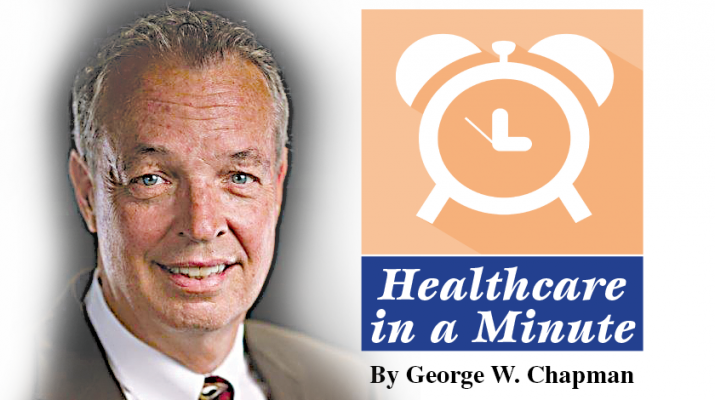 The mental health crisis within a crisis is the impact of a family member undergoing a mental health issue on their family.
The mental health crisis within a crisis is the impact of a family member undergoing a mental health issue on their family.
A 2022 study conducted jointly by the Kaiser Family Foundation and CNN found 90% of respondents believe we are in a mental health crisis in our country. Access and cost are the two largest barriers facing patients and their families. A family in crisis could involve a family member living on the streets, a family member institutionalized because a threat to self or others, a family member overdosed or attempted suicide. The support available to families is just as lacking as the support for the family member in need of treatment. The survey of families in crisis revealed 28% had a family member institutionalized; 21% had a member in an emergency department for an overdose; 14% had a member living on the street; 16% said a member was homeless; 8% had a member with an eating disorder; 20% reported a family member with cutting or self-harm behavior; 16% reported a member had attempted suicide; 50% of the families reported one or more of the above; 40% said the member crisis had a major negative impact of family relations; 57% of the families surveyed had incomes less than $40,000 while 43% had incomes more than $90,000.
ACA Refresher
 As the election looms ever closer, once again the Affordable Care Act is a political football. Ignorantly proclaiming “the ACA is terrible healthcare,” some political leaders denigrate all the insurance companies, physicians, nurses and hospitals that pay for or provide the care to more than 45 million patients. Since the genesis of the ACA in 2010, the number of uninsured has been cut in half from 15% to just more than 7%. Most of those covered by the ACA qualified via expanded Medicaid coverage in their state. (For example, the threshold to qualify for Medicaid was raised from earning less than $12,000 a year to earning less than $15,000 a year.) For those that earn more than the threshold, up to 400%, they can purchase a commercial plan online at discounted rates based on their income. The federal government reimburses the participating insurance plans for the balance of the full premium. The subsidy runs around $1 billion annually. There is now record commercial insurance company participation, averaging six companies per ACA market. The ACA did not just impact the under or uninsured. For ALL of us, you cannot be denied coverage by any carrier for a preexisting condition. Plans cannot charge higher premiums if you had what was once considered a preexisting condition. Plans cannot impose lifetime limits for an illness. The ACA limited out-of-pocket costs and required carriers to offer preventive care without any out-of-pocket costs to the member. Families can keep their children on their plans up to age 26. The ACA made it far easier for consumers and businesses to compare plans. Bronze, silver and platinum levels of insurance must meet basic coverage requirements. (Most covered by employer-sponsored insurance are in silver plan.) Insurers cannot discriminate against small businesses. Finally, insurers must spend at least 85% of their premiums collected on claims. If they spend less than 85%, it must be rebated to the employer. This prevents price gouging by the carriers.
As the election looms ever closer, once again the Affordable Care Act is a political football. Ignorantly proclaiming “the ACA is terrible healthcare,” some political leaders denigrate all the insurance companies, physicians, nurses and hospitals that pay for or provide the care to more than 45 million patients. Since the genesis of the ACA in 2010, the number of uninsured has been cut in half from 15% to just more than 7%. Most of those covered by the ACA qualified via expanded Medicaid coverage in their state. (For example, the threshold to qualify for Medicaid was raised from earning less than $12,000 a year to earning less than $15,000 a year.) For those that earn more than the threshold, up to 400%, they can purchase a commercial plan online at discounted rates based on their income. The federal government reimburses the participating insurance plans for the balance of the full premium. The subsidy runs around $1 billion annually. There is now record commercial insurance company participation, averaging six companies per ACA market. The ACA did not just impact the under or uninsured. For ALL of us, you cannot be denied coverage by any carrier for a preexisting condition. Plans cannot charge higher premiums if you had what was once considered a preexisting condition. Plans cannot impose lifetime limits for an illness. The ACA limited out-of-pocket costs and required carriers to offer preventive care without any out-of-pocket costs to the member. Families can keep their children on their plans up to age 26. The ACA made it far easier for consumers and businesses to compare plans. Bronze, silver and platinum levels of insurance must meet basic coverage requirements. (Most covered by employer-sponsored insurance are in silver plan.) Insurers cannot discriminate against small businesses. Finally, insurers must spend at least 85% of their premiums collected on claims. If they spend less than 85%, it must be rebated to the employer. This prevents price gouging by the carriers.
Gun Violence
 In 2022, 48,000 of us were killed by guns, half by suicide. That’s about 132 gun deaths a day. The leading cause of death among children and teens is — guns. To develop an effective prevention and counseling program, the government needs better data from hospitals, emergency rooms and physicians regarding gun related injuries and deaths. Hospitals will receive extra funding for compiling and reporting the data which has yet to be determined. (The data collection will not reveal names.) Even funding for just studying gun violence is a political football in Congress. A scant $25 million had been earmarked for the study. By comparison, three times that amount is earmarked to study teenage drinking.
In 2022, 48,000 of us were killed by guns, half by suicide. That’s about 132 gun deaths a day. The leading cause of death among children and teens is — guns. To develop an effective prevention and counseling program, the government needs better data from hospitals, emergency rooms and physicians regarding gun related injuries and deaths. Hospitals will receive extra funding for compiling and reporting the data which has yet to be determined. (The data collection will not reveal names.) Even funding for just studying gun violence is a political football in Congress. A scant $25 million had been earmarked for the study. By comparison, three times that amount is earmarked to study teenage drinking.
Cyberattack Update
The impact and harm of that record-breaking breach a couple of months ago at United Health’s claims clearinghouse, “Change Health,” is still being felt. It disrupted almost HALF of all claims filed by physicians, hospitals and pharmacies. Consequently, the DHHS office of civil rights is allowing affected providers to require United Health to notify their patients of their data that was stolen.
Medicare Advantage (MA) Plans
 MA plans are offered by commercial carriers as an alternative to traditional Medicare. Seniors are enticed to enroll by expanded benefits (preventive services, dental, vision and even free gym membership) without an increase in their premiums or what is deducted from their monthly social security check. The concept makes a lot of sense. By offering these extra benefits, MA plans expect that their seniors will be healthier, which reduces future claims. So, the investment in the extra benefits offered to seniors by MA plans will be recouped down the road. More than half of all seniors, about 33 million, have opted for MA plan. Initially, MA plans were covering “younger” or “less risky” seniors (65-70) who still didn’t require a lot of medical services. Commercial profits were good and they couldn’t enroll savvy seniors fast enough. However, those “younger” seniors are now in their 70s and 80s and here come the claims. According to some MA plans, profits are declining. Consequently, they are increasing denials and slowing the approval process. Providers and health systems aren’t standing for this, so many are threatening to refuse participation and accept only traditional Medicare. This could in turn force many MA members back to traditional Medicare, especially if their favorite providers drop their MA plan. MA plans are paid for each member enrolled by CMS, which also runs traditional Medicare. To entice commercial plans, CMS offered an enhanced premium to cover startup costs. So initially, things were running well for these plans. These enhanced MA plans cost CMS about $5,700 year per enrollee versus about $5,000 per traditional Medicare enrollee. Industry experts believe that, despite the kvetching, most MA plans will hang in despite lower profits and will adjust.
MA plans are offered by commercial carriers as an alternative to traditional Medicare. Seniors are enticed to enroll by expanded benefits (preventive services, dental, vision and even free gym membership) without an increase in their premiums or what is deducted from their monthly social security check. The concept makes a lot of sense. By offering these extra benefits, MA plans expect that their seniors will be healthier, which reduces future claims. So, the investment in the extra benefits offered to seniors by MA plans will be recouped down the road. More than half of all seniors, about 33 million, have opted for MA plan. Initially, MA plans were covering “younger” or “less risky” seniors (65-70) who still didn’t require a lot of medical services. Commercial profits were good and they couldn’t enroll savvy seniors fast enough. However, those “younger” seniors are now in their 70s and 80s and here come the claims. According to some MA plans, profits are declining. Consequently, they are increasing denials and slowing the approval process. Providers and health systems aren’t standing for this, so many are threatening to refuse participation and accept only traditional Medicare. This could in turn force many MA members back to traditional Medicare, especially if their favorite providers drop their MA plan. MA plans are paid for each member enrolled by CMS, which also runs traditional Medicare. To entice commercial plans, CMS offered an enhanced premium to cover startup costs. So initially, things were running well for these plans. These enhanced MA plans cost CMS about $5,700 year per enrollee versus about $5,000 per traditional Medicare enrollee. Industry experts believe that, despite the kvetching, most MA plans will hang in despite lower profits and will adjust.
Nursing Homes to Sue
 The national association that represents skilled nursing facilities is suing CMS over unreasonable staffing requirements that will be harmful to patients and financially untenable. The association argues the staffing requirements are a knee jerk reaction to the nursing home deaths during the pandemic. While a quarter of COVID-19 related deaths occurred in SNFs, the frail elderly were generally acknowledged to be most at risk, no matter if at home or in an SNF. The mandated staffing requirements are NOT supported financially via enhanced reimbursement from either Medicare or Medicaid. Hundreds of financially strapped SNFs could close unless there is some sort of compromise.
The national association that represents skilled nursing facilities is suing CMS over unreasonable staffing requirements that will be harmful to patients and financially untenable. The association argues the staffing requirements are a knee jerk reaction to the nursing home deaths during the pandemic. While a quarter of COVID-19 related deaths occurred in SNFs, the frail elderly were generally acknowledged to be most at risk, no matter if at home or in an SNF. The mandated staffing requirements are NOT supported financially via enhanced reimbursement from either Medicare or Medicaid. Hundreds of financially strapped SNFs could close unless there is some sort of compromise.
 George W. Chapman is a healthcare business consultant who works exclusively with physicians, hospitals and healthcare organizations. He operates GW Chapman Consulting based in Syracuse. Email him at gwc@gwchapmanconsulting.com.
George W. Chapman is a healthcare business consultant who works exclusively with physicians, hospitals and healthcare organizations. He operates GW Chapman Consulting based in Syracuse. Email him at gwc@gwchapmanconsulting.com.

